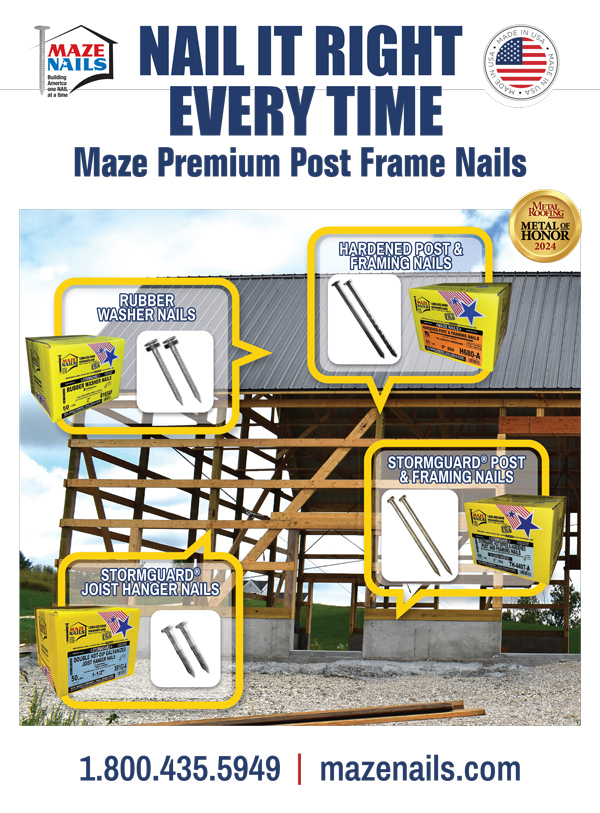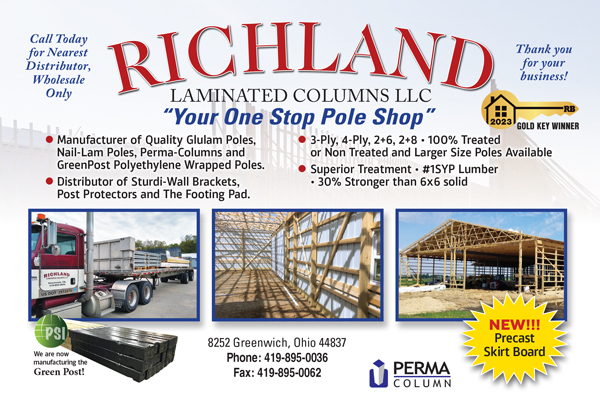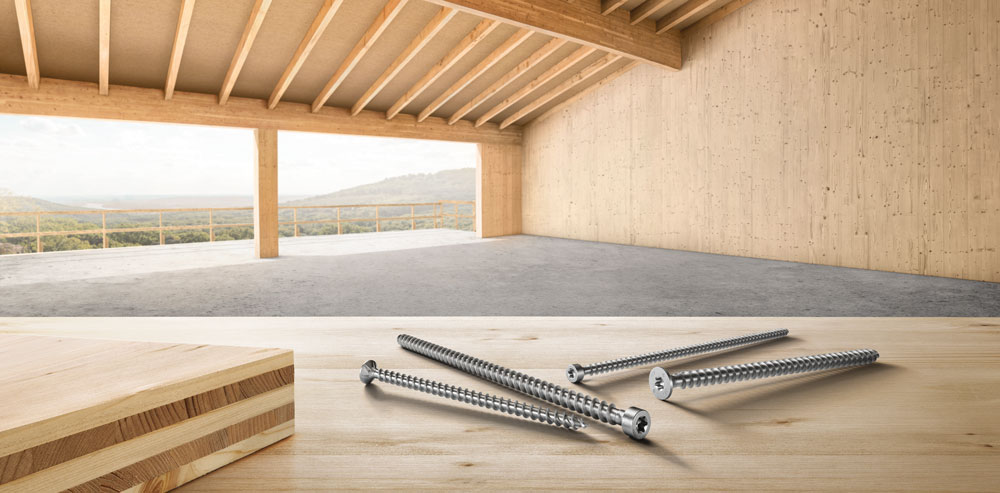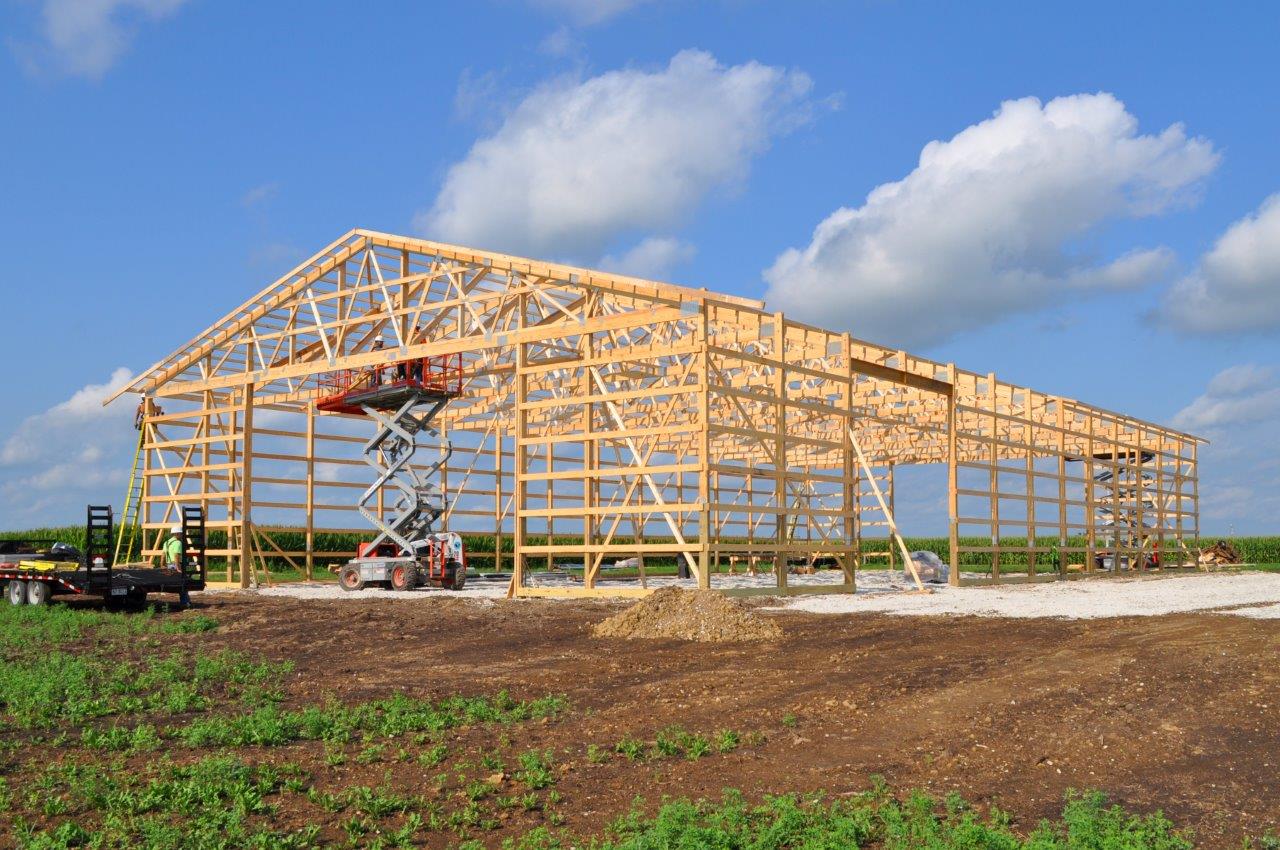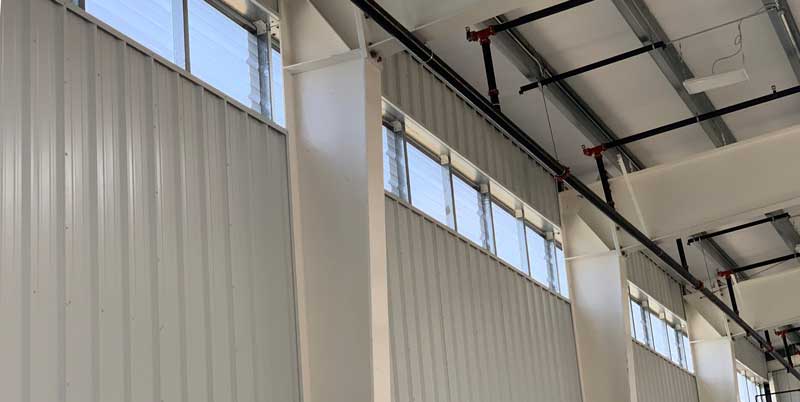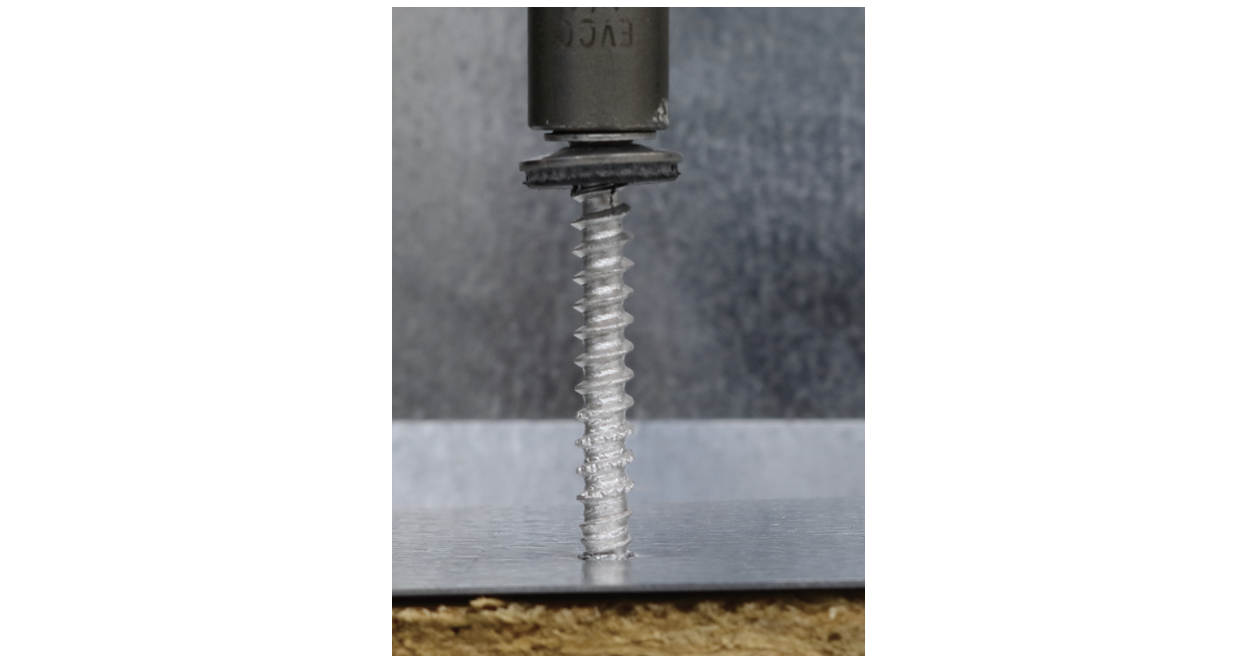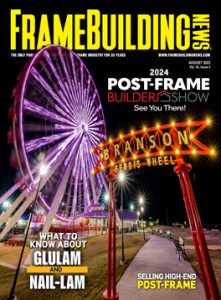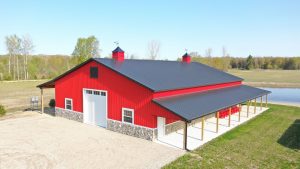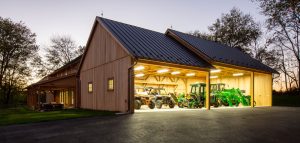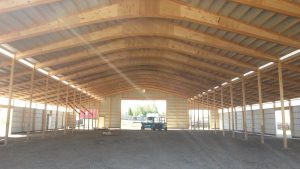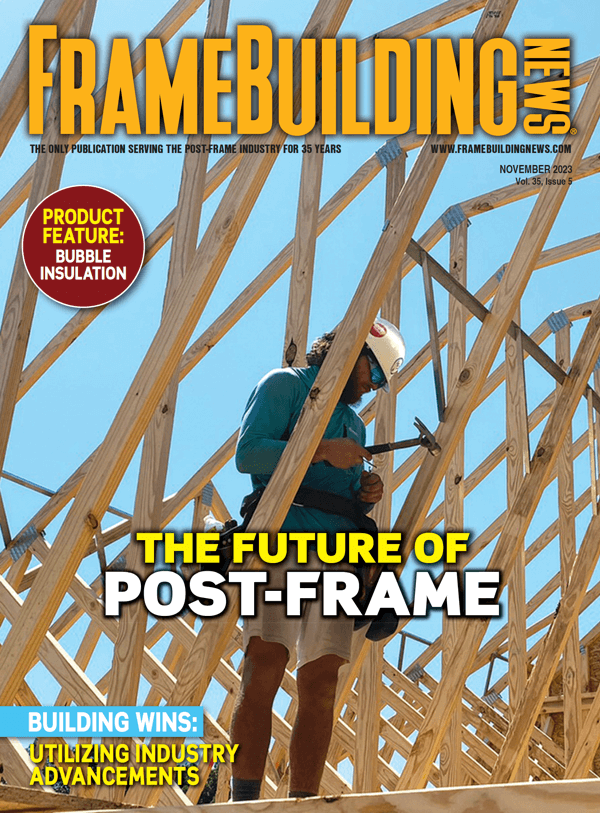Originally published in the Performance Plastics Association (IAPD) Magazine, January 2015 edition. Reprinted with minor updates by the author.
Providing natural light to interior spaces is a priority for most building types. Although glass has been used for hundreds of years, its inherent weaknesses — brittleness and the potential hazard of glass shards — make it a less-than-ideal material choice. In the 20th century, as commercial polymers evolved, acrylic began to be selected for safety glazing applications, and by the 1970s, polycarbonate sheet was used in greenhouses and conservatories. With improvements in the technology, polycarbonate became a desirable alternative to glass, making it an ideal choice for architectural daylighting. Polycarbonate provides improved impact resistance and flammability behavior compared with acrylic, but without compromising safety and security needs.
Product Types
Polycarbonate sheets are produced in three distinct forms: flat, solid sheets; corrugated sheets; and cellular or multiwall sheets. Each product type has specific benefits for a range of construction applications. Sheets are available with smooth or textured surfaces to alter aesthetics, diffuse light and hide surface damage and dirt. Tints allow for custom, transparent or translucent colors and can be modified for other functional performance attributes.
Those who have seen decades-old, aged plastic glazing don’t easily forget its weathered appearance. Fortunately, technology has advanced, and sheets are now protected from environmental degradation by ultra-violet (UV) absorbers. UV additives can be incorporated into the surface by coextruding thin cap layers on top of the sheet, or they can be added to coatings, which can also offer additional mar and chemical resistance. Sheets with UV protection are currently available from manufacturers with warranties of up to 20 years.
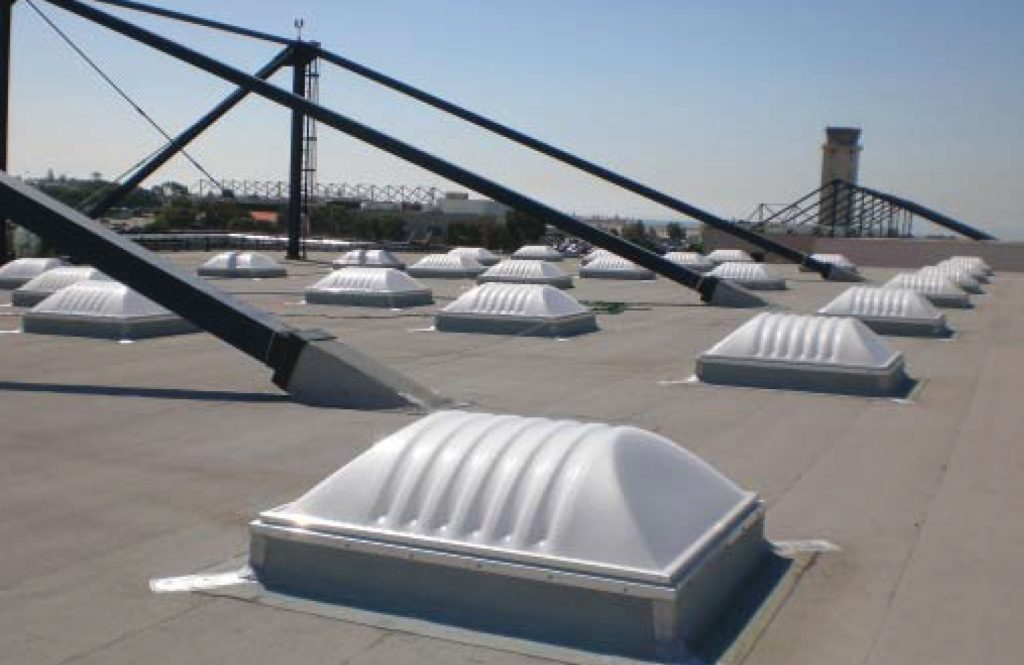
A typical polycarbonate skylight used for toplighting commercial spaces is depicted above. (Courtesy of Acuity Brands)
Other new technologies finding their way into polycarbonate architectural glazing include materials that provide enhanced light diffusion to reduce glare and improve light spreading though the glazing surface without sacrificing light transmission. Products that block solar radiation to reduce cooling load on air conditioners in warm weather climates are also offered.
Polycarbonate sheets can be laminated together with a polyurethane film adhesive under heat and pressure for more demanding applications where resistance to forced entry is needed. Polycarbonate can also be laminated with glass layers on the outer skin to provide even better mar and chemical resistance. Glass-clad polycarbonate laminates also offer resistance to high-powered ballistics.
Safety and security glazing
In the 1960s, standards bodies — such as Underwriters Laboratories (UL) and the American National Standards Institute (ANSI) — began to develop requirements for safety and security glazing. These requirements were published in 1966 under the title Z97. Such efforts helped lay the groundwork for adoption of polycarbonate and polycarbonate laminates for use in security and safety glazing in buildings along with other types of advanced glass products. A summary of ballistics and forced-entry resistance of laminates is shown in Table 1.
The emergence of this new class of products paved the way for glazing in a range of applications for containment, forced-entry resistance and ballistic protection for both government and private security.
Although specific framing design is available for resistance to forced entry, polycarbonate solid sheets and laminates can be used in conjunction with existing windows as over-glazing or as a direct replacement for glass to provide enhanced security. Polycarbonate has been successfully installed in standard, commercial aluminum storefront framing to provide resistance to repeated vandalism and burglary. For ideal performance, polycarbonate sheets should have increased edge engagement compared with glass, due to differences in thermal expansion and high flexibility of the glazing. New technologies are allowing polycarbonate sheet to play a critical role in defending against explosions from industrial accidents as well as terrorism. The Army Corps of Engineers now recognizes polycarbonate in the Unified Facilities DOD Minimum Criteria for Antiterrorism Standards for Buildings.
Polycarbonate has a long history in applications where resistance to impact is a critical performance feature. Windows have been designed using solid, flat sheets for protection from extreme weather events such as storms and tornadoes. Hurricane shutters using multiwall sheet and corrugated sheet have long been a solution for translucent, building envelope protection. Resistance to vandalism and forced entry has supported widespread use as school glazing for many years. In light of recent events, officials and the public have expressed a greater interest in school security. Polycarbonate glazing has been used to harden entryways and first-floor windows to prevent intruders from quickly gaining access to facilities. Polycarbonate is uniquely suited to certain safety and security applications. Psychiatric windows have precise requirements that specify polycarbonate be used as a protective layer on the patient side of the window to protect occupants from injury resulting from broken material shards and resist tampering risks associated with window films.

Table 1: Security Glazing Standards and Performance Rating
Overhead glazing
Transparent and translucent roofing elements and skylights are ideal design elements for daylighting. What was once exclusively a glass solution gave way to fiberglass-reinforced panels and later to thermoplastic products, which could be formed into domes for improved rigidity and light harvesting. Corrugated polycarbonate sheets provide an economical option for a variety of spaces and are available to consumers at home centers. More sophis- ticated structures using heat-formed domes and cold-formed sheets offer enhanced aesthetics, as well as compliance with local code requirements.
As energy codes drive building designs toward more daylighting, prescriptive requirements for increased skylight area are emerging as a necessity for certain building types. In 2008, the U.S. Department of Energy reported that skylights saved up to 55 percent of annual lighting energy while having a small impact on energy consumption from heating and cooling. The report concluded that in the cases which were studied, toplighting can save up to US$0.32/square foot per year.
Not all building types see the same benefits from toplighting. High-ceiling warehouse and retail spaces realize outstanding results, both from an energy-saving perspective as well as the well-being of occupants. Case studies have been published referencing the positive impacts major retailers such as Costco and Walmart have experienced due to the benefits of plastic skylights. Although most commercial skylights are produced using acrylic, polycarbonate is gaining in popularity because of rising costs due to damage from extreme weather, such as hail and hurricanes, and requirements for flammability resistance that cannot be met with acrylic. Polycarbonate skylights are also the only plastic glazing material that allows unit skylights to meet Factory Mutual Insurance requirements.
The American Architectural Manufacturers Association has published the Selection and Application Guide for Plastic Glazed Skylights and Sloped Glazing. This document provides details on the performance of plastic glazing options and a comprehensive reference on relevant codes and applications.
Advanced polycarbonate glazing systems using multiwall sheets are quite common for large projects in other parts of the world. Many new stadiums constructed for national and global events, such as the Olympics and the World Cup, feature polycarbonate roofing and wall cladding and take advantage of the durability, design freedom and color customization not available with other light-transmitting building materials.
Greenhouse Glazing
The combination of light transmission of up to 90 percent, resistance to breakage, light weight and thermal insulation creates a property profile that makes polycarbonate sheets an excellent choice for greenhouse construction. Depending on the climate zone, roofing can be clad with multiwall sheets with improved thermal insulation in northern climate zones or single-wall, corrugated sheets for southern climate zones. In addition, both materials can be used for sidewalls depending upon the application.
Translucent Façades
New design techniques are helping polycarbonate sheets find their way into new applications that provide daylight to interiors or diffuse LED lights for architectural finishes. Unitized systems featuring multiwall sheets have been produced with multiwall polycarbonate that meets building code requirements. Additionally, these systems enable long spans and ease of installation and repair, while also being able to support the needs of a high-performance building envelope. Rainscreens have also been fabricated using solid sheets for similar, striking exterior finishes.

The PGE Arena Gdansk soccer stadium in Danzig, Poland, is clad with 45,000 square meters of multicolored, multiwall polycarbonate sheet.
Challenges and Path Forward
In North America, polycarbonate has seen inconsistent adoption in various market segments within the construction industry. Security and safety window glazing using polycarbonate monolithic solid sheets and laminates provides superior protection, but durability concerns arising from dated, inferior technology have limited acceptance. Glass-clad polycarbonate offers superior protection from the most serious threats — at a relatively high cost. Overhead glazing in the form of skylights appears to be a significant growth area considering new building codes. Agricultural applications using multi-wall and corrugated sheet are well established and offer an ideal solution for many growers. Decorative, translucent architectural finishes such as canopies and façades are gaining traction by using new laminated technologies and system approaches.
Initiatives in three specific areas would support an increase in polycarbonate usage in architecture: (1) advocacy at industry associations and building code standards bodies; (2) education of architects on the features, benefits and successful application of polycarbonate; and (3) implementation of new technologies to help bridge performance gaps between polycarbonate and glass. In the meantime, leading designers and architects continue to identify a host of creative and functional applications that take full advantage of the unique characteristics of this high-performance building material. FBN
Kenneth Schwartz is presently Head of Commercial Operations for Covestro’s Specialty Films business in North America. Suppliers of plastic sheet used for architectural applications, can be found at iapd.org.



